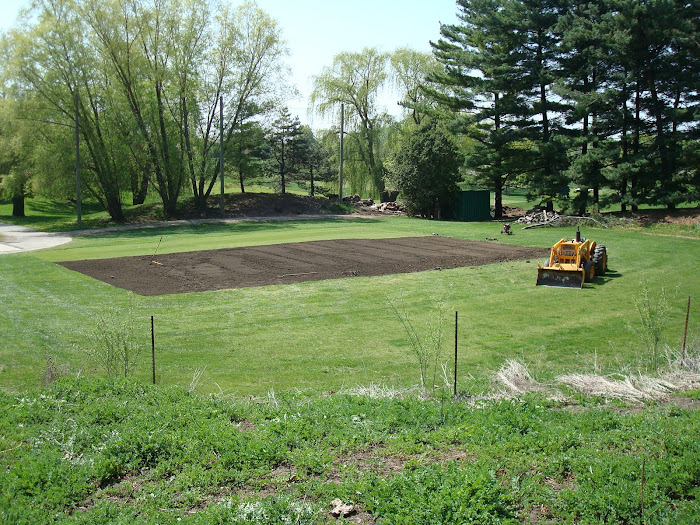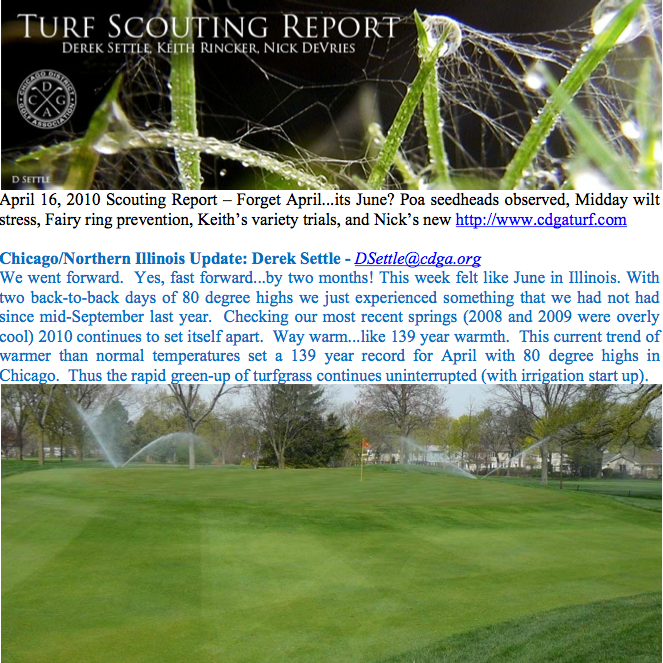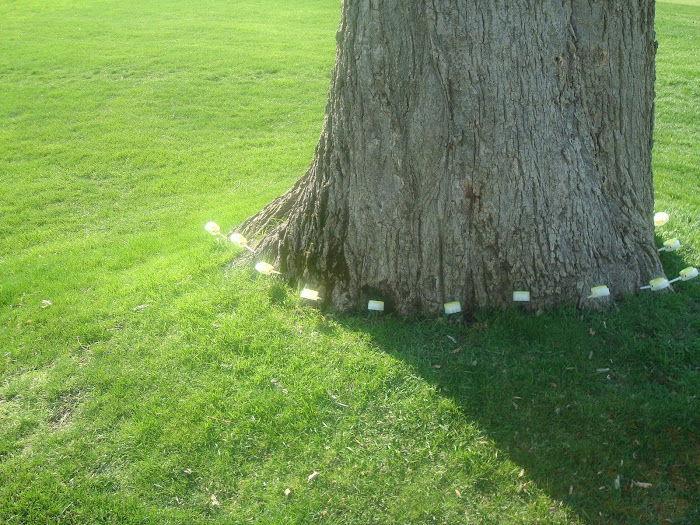Today and tomorrow (22nd-23rd) ComEd will be doing tree work by 2 tee and along the fence to the 3rd tee. They will be trimming branched in the way of the power lines. Also, they will be removing some trees on the adjacent property near 3 tee.
The cart path around 2 tee will be closed while they are working. Carts will need to leave the path and drive along the right side of 2 tee, and use the bridge to cross over the creek to the [.....]
We have learned through the years that several members of our crew are very good at stone work. Their best example yet is the bridge on thirteen that was completely done in house by our staff. The bridge on hole 1 also displays their work. Today the task was to create a fire pit off of the back porch by the Pump Room. Previous to today, the bushes had been [.....]
Today we prepared and reseeded the nursery for out fairway turf. In late fall, a little over half of the nursery was removed to sod areas on the course. Some of those areas included the herbicide damage on 2 approach, and several areas in the driving range fairway.
The area was stripped of any remaining sod pieces earlier in the week, then today we began tilling up the area and removing any rocks that came to the surface.
After the area was prepared, we seeded [.....]
I have posted the most recent Turf Scouting Report from Friday, April 16. This issue is highlighting the abnormally warm temperatures we have had recently. April 16 Turf Scouting Report. [.....]
I took this picture today of the flowers by 1 tee and had to share it with you. [.....]
You can now enjoy the fountain again as you make your way around the course. The repairs were made to the fountain over the winter, and we got it back into the pond and running today.
Here is a picture of the fountain ready to be take back out to the pond. It is inverted from this position when it is in the pond. The silver casing on the top is a water proof case which houses the motor. The motor spins a prop that pushes water through [.....]
The newest Turf Scouting report is available. April 9 Turf Scouting Report [.....]
Hopefully you like the new look of the blog. We will slowly be adding more items to this new page in hopes it is easier for our readers to follow along with us. [.....]
Our large Elm on the left side of 13 fairway is being treated for the prevention of Dutch Elm disease. The spikes in the tree contain a product that is taken up by the tree to aid in the prevention of the disease.
Dutch Elm Disease
The devastation of this disease on the elm population is well known. The disease is spread from tree to tree by two species of bark beetles. Once the disease has entered the tree, the tree's natural tendency is to [.....]
The exterior of the clubhouse received a facelift this past week with new exterior lights. The old lot had 2 broken lights, and all were weathered and deteriorating on the exterior surfaces. It was a simple procedure, the new lights were able to utilize the existing mounts on the clubhouse so all that was needed was to take down the old and hang the new.
Before:
After: [.....]
A short note on a few things on the course:
This spot is on one fairway towards the green. This shows the most extensive winter damage we suffered. It also shows how much more susceptible annual bluegrass is to winter damage. The dead spots are annual bluegrass, the grass that is still alive is bentgrass. We waited to see how much of this area would green back up and, as suspected, the annual bluegrass is dead. We will seed into the brown areas soon.
[.....]
One of the inside winter projects this year was to install a pulley system in the shop that better enable us to lift large or heavy objects into the storage area above the offices and break room. Today while moving the beverage stations out to the course, we utilized the pulleys to move the stations into the back of a trailer.
The railing is removable for the purpose of moving things into the storage area. The crew fashioned a cradle to hold the beverage station for [.....]
The new Turf Scouting report (April 2) is posted from the CDGA.
[.....]
During the process of recharging the irrigation system, it is typical for problems to arise. This year was no different, but fortunately we ended up with a short list of problems that need to be addressed. Some typical problems are heads that stick on, heads that stop spinning, broken heads and leaks in the piping system. This year we had one head stick on, 3 broken heads and one leak.
Here is a picture of one of the broken heads. The top portion of the head shoots [.....]















